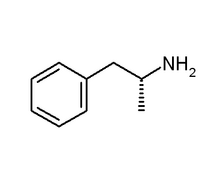With just one glance, anyone can tell 1st Lt. Jen Smith is not the stereotypical scientist.
Tall, slim and athletic, she looks more like a beach volleyball player than a nerdy data cruncher. She's bubbly and exudes infectious energy.
However, behind her little-girl smile is the ever-clicking mind of an Air Force behavioral scientist. But this Army brat doesn't wear a long white lab coat or thick horn-rimmed glasses. And in her office, there's not a plastic "nerd pocket" in sight. Still, she admits she and fellow scientists do tend to be "kind of nerdy."
"But I'm a fun herd," said the 24-year-old from Athens, Ohio.
There's nothing nerdy, however, about what the U.S. Military Academy at West Point, N.Y., engineering psychology graduate does for a living. She works at the fatigue countermeasures branch of the Air Force Research Laboratory, Brooks City-Base, Texas. Its scientists find ways to help Airmen stay awake when they're involved in long, sustained operations.
So the lieutenant and her co-workers conduct sleep deprivation research. They put test subjects, usually pilots, through 40-hour studies while monitoring their body and brain activities. About every five hours, pilots take cognitive tests while the scientific team monitors them to gauge their performance. One test is a one-hour flight simulator mission where they perform 15 identical flight sequences.
The pilots don't "go bananas," Lieutenant Smith said. "But it's amazing how much their performance declines on just basic flight maneuvers."
With Airmen engaged in the global war on terrorism, the lieutenant knows her job is even more important. The struggle has increased the Air Force operations tempo by 400 percent, she said, while the number of Airmen in uniform has dropped by 37 percent. She doesn't lose sight of that reality, or the price Airmen will pay without her help as they continue the fight.
"Inevitably, everyone will experience fatigue," she said. "So the research we're doing is important for Airmen's safety. We're helping them do their missions."
There are countermeasures to fight fatigue. Brooks scientists try finding more ways. But educating people on good sleep practices is the most important step, Lieutenant Smith said.
"But if that's not possible, then we also look at using stimulants," she said.
In Air Force lingo, these are "go pills." There are two types. Dextroamphetamine, or Dexedrine, has been around for decades. In November 2003, the Air Force approved Modafinil for use by bomber, tanker and airlift pilots. Lieutenant Smith helped test the new drug on F-117 Nighthawk pilots. It was something she said was important and exciting, because unlike Dexedrine which has side effects, the new compound is different.
"Nine out of 10 of the pilots couldn't tell they were even taking a drug," she said. "But it was still helping their performance."
Doing important research that is relevant and using state-of-the-art technology is what Lieutenant Smith likes about her job. She also likes the "human factor" of her work. She gets to make things "more user-friendly," as she puts it. And though much of the research is aviation-focused, most people can benefit from it, "especially the basic practices of good sleep hygiene."
But Lieutenant Smith almost didn't join the Air Force. The daughter of a retired Army signal corps officer and Korean mother, her mother pushed her to go to West Point. It was a good choice, she said. But after graduating in 2002, she discovered the Army didn't have a job for her in the engineering psychology field. The Air Force did.
"The Air Force had a job where I could use what I learned in school--and apply it to my career," she said. So she crossed into the blue. A switch that has influenced her life.
"I help the Air Force accomplish its mission--and get to make an impact," she said.
Life in San Antonio has also had an effect on the young scientist. She's taken up country music, two-steppin', mechanical bull riding and rodeos. Plus, she plays base-level basketball and is in a local volleyball league.
Is that any way for a scientist to act? Sure it is.
Career Field Facts
61S1B--Behavioral scientist
Assigned: 102
Duties: Conducts or manages programs, projects and activities to perform research. Research includes defining a problem, selecting methods of approach, performing experiments, accumulating and interpreting data and publishing results. Research management includes formulating, planning, fiscal programming, monitoring, evaluating, coordinating and administering programs, projects and activities.
Civilian application: Behavioral scientist.
1st Lt. Jen Smith
Behavioral scientist, Air Force Research Laboratory, Brooks City Base, Texas
Years in Air Force: Two
Hometown: Athens, Ohio
Reason for joining: To apply what she studied at the U.S. Military Academy at West Point.
Assignments: Brooks City Base.
Coming up: A field fatigue study at Holloman Air Force Base, N.M., to explore different "go pills" and evaluating their effectiveness. "That's going to take a big chunk of my year," Lieutenant Smith said. Then she plans on returning to school and, maybe, applying for the judge advocate general program.
Best thing about the job: Traveling to different bases to conduct field studies about how fatigue affects Airmen--and working with different technologies. "Finding different ways to solve fatigue problems, and that helps people," she said.
COPYRIGHT 2004 U.S. Air Force, Air Force News Agency
COPYRIGHT 2005 Gale Group



